#john lambert
Text
Once upon a time Republicans were the "party of law and order". With each passing day that seems increasingly like a surreal fantasy.
The Republican Party has evolved into an extended crime family with the Great Orange Putz as a third-rate Mafia boss at its head.
Ryan Fournier, one of the founders of Students for Trump, was arrested last Tuesday on assault charges in North Carolina, according to court documents obtained by Axios. Fournier, 27, was accused of assaulting a woman identified as his girlfriend, “grabbing her right arm and striking her in the forehead” with a handgun, the outlet reported. The woman suffered a minor injury in the attack. Fournier was charged with domestic assault of a woman and assault with a deadly weapon. He was released on a $2,500 bond and is set to appear in court on Dec. 18, court records show. Fournier co-founded Students for Trump in the months before the 2016 presidential election while at Campbell University, a private Christian school in North Carolina.
Yeah, Fournier is the graduate of a "private Christian school". Far right fundamentalists line up to perform fellatio on Trump because they believe he's an instrument of God despite the fact that he's a notorious thief, liar, adulterer, and hatemonger who has not been to church in eons except maybe for weddings and funerals.

Here's a more recent photo of the co-founder of Students for Trump.

But wait, there's more!
Like Donald Trump, Fournier will quickly turn on his friends and colleagues if there's some advantage for him to do so.
From 2021...
Students for Trump Founder Ryan Fournier Ratted Out Friend To Feds
Students for Trump co-founder and pugnacious MAGA Twitter star Ryan Fournier allegedly helped his friend create a fake law firm to bilk innocent clients, only to turn against his one-time partner to help federal law enforcement, according to records and statements made Tuesday by a lawyer involved in the case.
The new revelations about Fournier’s alleged involvement in the fake law firm came after a Tuesday sentencing hearing where a federal judge sentenced Fournier’s Students for Trump co-founder, 25-year-old John Lambert, to 13 months in jail for operating a fake law practice.
Court records have long suggested that Fournier was the unnamed “Co-Conspirator 1” named in Lambert’s 2019 indictment. On Tuesday, Lambert’s defense attorney said that Fournier was the co-conspirator in an interview with the New York Daily News.
Lambert’s attorney confirmed Fournier’s involvement in an email to The Daily Beast.
Fournier didn’t respond to requests for comment.
Fournier will not face prosecution himself, according to a document filed by federal prosecutors. In a federal court filing, the man now identified as Fournier is described as “providing information to the government since in or about April 2018 in the hope of not being charged for his role in the wire-fraud conspiracy.”
His (apparently former) friend John Lambert served hard time while Fournier went free – only to assault his girlfriend this year with a handgun. Hopefully the judge will take Fournier's prior criminality into consideration when sentencing him.
#students for trump#donald trump#republicans#the republican crime family#ryan fournier#assault with a deadly weapon#fournier hit his girlfriend with a handgun#north carolina#maga criminals#john lambert#christian fundamentalists#lock him up!#election 2024
2 notes
·
View notes
Text
Lord Protector 1654-1655: ‘part of them, in the name of the people, gave up the sovereignty to him…’
The King Without A Crown

The Inauguration of Oliver Cromwell as Lord Protector. Source: Prints and Ephemera website
THE EFFECTIVE constitutional suicide of the Nominated Assembly created the political moment for John Lambert’s The Instrument of Government to transition from being a philosophical contribution to the development of English republicanism, to being the means by which the inchoate experiments that had characterised the Commonwealth since the execution of Charles I, to be replaced by the English Protectorate.
Lambert’s work was the first, and remains the only, written constitution in British history. Cromwell himself had been unconvinced when Lambert had first presented the dense document to him. To the conservative Lord General, the Instrument owed too much to the Agreement of the People and radical sentiments expressed in the Putney Debates, but Cromwell’s difficulty was that he had nowhere else to go. The millennial aspirations of Thomas Harrison’s Fifth Monarchists were as much an anathema to him as was the reductive logic of restoring Charles II to his throne. Cromwell knew that Lambert had accurately highlighted the cause of the collapse of the Rump and the demise of the Barebones Parliament: with no executive figure to take the place of the King, there was no legitimacy to the Parliamentary remnants that had run England since the conclusion of the civil wars. So far, all decisive executive actions since 1648 had been enabled by the Army, and Cromwell, military man though he was, had no intention of becoming a dictator, reliant on the New Model Army to sustain him in power. And so it was, Cromwell accepted the Instrument of Government as the means by which to restore stable and accepted constitutional rule to England, and, by extension, to the conquered realms of Scotland and Ireland. Cromwell agreed to become a King without a crown, and assume the position of head of state, as Lord Protector.
On 15th December 1653, the Instrument was debated and adopted by the Council of State. The very next day, Cromell was sworn into office as the Lord Protector of the Commonwealth of England. The ceremony in the Court of Chancery in Westminster was a modest affair - Cromwell wore a sober dark suit under his ermine-lined robe, and if there was a Great Seal to confer status on his new office, there was no sceptre or orb, much less a crown. Cromwell may, to a degree, have assumed monarchical authority, but this was no new royal dynasty being put into place: Lambert’s Instrument made sure of this. Lambert had been acutely aware of how the failure to separate out executive and legislative powers ran the risk of leading to despotism when he wrote the Instrument. Therefore, although the Lord Protector would be pre-eminent, he would not be permitted to rule alone. In his new role, Cromwell would be obliged to heed the views of a representative Parliament, and he would also have to share government with an executive Council and no decisions by the Lord Protector could be implemented without the explicit consent of the other two institutions of government.
Parliament would comprise 460 seats: 400 for England and Wales and 30 each for Scotland and Ireland. Elections would take place every three years and no Parliament could be dissolved less than five months into its session. The Council comprised between 13 and 20 life members, providing a level of stability and continuity in government to set against the regular changes to the membership of the legislature as a result of the Parliamentary elections. Crucially, the Councillors could not be dismissed by the Lord Protector in the way the King had been able dispense with members of the Privy Council with whom he disagreed. Furthermore, the power to replace the Lord Protector, should he die in office, was vested with the Council. Control of the Army was shared between all three branches of the constitution. Therefore the Instrument in effect sought to introduce the type of constitutional monarchy that much Parliamentary opinion had sought to achieve both in the lead up to the civil wars and in the period of negotiation with Charles after the conclusion of the first civil war, but within a republican framework. The Lord Protector in many ways resembled a modern President bounded by different chambers of government. He could veto legislation, but not indefinitely: ultimately a majority vote in Council on a bill would be sufficient to see it pass into law following Parliamentary scrutiny and debate.
In actual fact, the republican constitution rarely worked as intended. There remained Royalist military activity in Scotland; Ireland, so recently engulfed in violent rebellion, could not be ruled constitutionally. Even in England, Presbyterian opposition to religious toleration (extended to all groups except Roman Catholics) and the fury of the Fifth Monarchists that a new head of state had replaced the King before the Second Coming, meant that elections were continually delayed. Even when Parliament finally met, Sir Arthur Haselrig, one of the five MPs Charles I had tried to arrest for treason in 1642, organised opposition to the Instrument itself, arguing that neither the office of Protector nor the Council were legitimate, and that both should be subordinated to Parliament. It seemed as though the debates of the early 1640s were being revisited.
Cromwell however was not going to tolerate this challenge. He attended the Commons and made it absolutely clear what the purview of Parliament was within the new tripartite system of governance. He produced a Declaration for all MPs to sign, to ensure each Member understood the role of Parliament and its limitations. Haselrig resigned rather than be a signatory to the Declaration, but the agitation did not stop. In late 1654, Parliament again debated amendments to the Instrument which would give the Commons the final say in the selection of Council members and to the office of Lord Protector itself. By January 1655, it became clear to Cromwell that Parliament could not be trusted. The current crop of Radical and Presbyterian MPs were not interested in sharing power within a republican constitution; for the MPs themselves, they had not fought both literally and figuratively with the King for 14 years to establish the primacy of Parliamentary sovereignty only to hand that sovereignty over to, as they saw it, unelected military cronies and and a would-be monarch. When MPs submitted their amendments to the Instrument to the Council for ratification, Cromwell again attended the House to argue against the proposals; he also announced the dissolution of the First Protectorate Parliament. Members left the House without needing to be ushered out by soldiers this time, but, once again, a Parliamentary settlement had failed.
In the meantime, the country had to be governed. Ultimately, Cromwell and his Council, in their search for stability, returned to that constant alternative to Parliamentary rule: that of the Army. With the Instrument only partially enacted, the Lord Protector instituted the very system he had tried to avoid - rule by the military in the shape of a group of soldier-administrators that became known as the Major Generals.
#english civil war#oliver cromwell#british history#parliament#charles ii#fifth monarchists#charles i of england#the instrument of government#john lambert#English republicanism#Arthur Haselrig
1 note
·
View note
Text
It royally pisses me off when people complain about Brian and Roger continuing with Adam Lambert.
Freddie Mercury was not Queen. Queen is not Freddie Mercury.
Brian wrote at least 63 Queen songs. Roger wrote at least 31. John wrote at least 23. They have every right to do what they want with it.
Not only that, but people tend to forget that Freddie didn’t found Queen. He changed the name to Queen, but Brian and Roger were already there. That group has always been Brian and Roger’s.
Don’t twist my words, I’m well aware that a large part of Queen’s success is because of Freddie and his charisma and talent. I’m not stupid. But I think it’s ignorant to suggest that they should just not tour anymore and not perform the music that’s shaped their lives??
Brian would go crazy if he didn’t tour. His life is his work, and vice versa. Anyone who knows anything about him would know how important it is for his well-being to keep working.
As for them “replacing” Freddie—fucking where, bitch? They’re not touring as Queen. They’re touring as Queen + Adam Lambert. John is still involved in the business aspects, regardless of the fact that he doesn’t speak to Brian and Roger anymore.
Plus, Spike has been working with them since 1984, at least, as a second guitarist, keyboardist, and technician. And Neil is a BEAST of a bassist on his own.
So comments like “I respect that Zeppelin backed down after Bonham’s death, but I can’t say the same about Queen”, implying there’s a loss of respect for the simple fact that musicians want to continue doing their job, despite the fact that they didn’t even perform as Queen again for YEARS, is plain ignorance. Nothing more, nothing less.
So again… Queen is, and always has been, so much more than just Freddie Mercury. And he would say the exact same.
#classic rock#queen#queen band#Freddie Mercury#Roger Taylor#Brian May#John deacon#music#70s#80s#90s#adam lambert#queen and adam lambert#qal#q+al
169 notes
·
View notes
Text




✨ North American Tour - day one: Baltimore. ✨
Look how they shine! Look how rock they are!
📸 CFG Bank Arena on IG.
#music#queen#queen band#freddie mercury#brian may#roger taylor#john deacon#adam lambert#queen and adam lambert#rock and roll#baltimore#usa#tour#bohemian rhapsody#queen + adam lambert
231 notes
·
View notes
Text
Me: As a gay trans man, an actor, and a musician, I take a lot of fashion inspiration (and transition goals, tbh) from movements and subcultures pioneered by queer men. Because of this, my style tends to lean slightly androgynous or masculine in an explicitly queer way, outside the confines of patriarchal cishet masculinity.
Queer people, et al: I diagnose you with nonbinary, they/them pronouns, and bisexuality
#transandrophobia#gay trans man#based on recent and real events#i like glam rock and take inspo from people like freddie mercury david bowie elton john and adam lambert#plus additions from leather culture#op
1K notes
·
View notes
Text
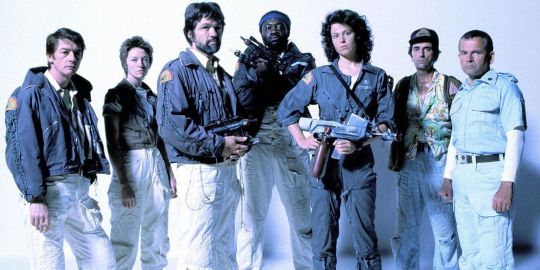
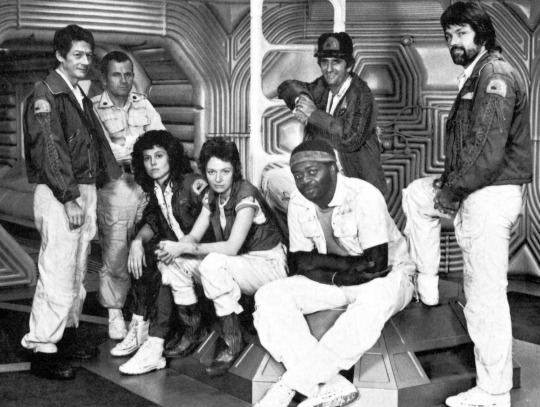
#john hurt#kane#veronica cartwright#lambert#tom skerritt#dallas#yaphet kotto#parker#sigourney weaver#ripley#harry dean stanton#brett#ian holm#ash#ash is a bitch#alien#cyberpunk#scifi
39 notes
·
View notes
Text

March 12th, 1986 - Queen Story!
'Princes Of The Universe' bw 'A Dozen Red Roses For My Darling' released in USA and Japan
- 'Princes Of The Universe'
Written by Freddie Mercury
Taken from 'A Kind Of Magic' album, 1986
- B-Side: 'A Dozen Red Roses For My Darling'
Written by Roger Taylor
🔸The whole thing, I mean, of group policy is, first of all, that the group couldn't agree on the one single. Because it was to do with the film and also to do with the new Queen product. Because what's happened – I think for the first time in Queen's life – is that we actually made a film soundtrack, but we've also made a Queen album – so, we had to try to let people know that it's not just a soundtrack, because we've got other songs as well. So it's hard to depict, that it's not all one soundtrack, and it's not just Queen. We had to try to bring two projects together. And so, I mean, within the members of the band as well, we were fighting as to who liked which song. So we couldn't agree at all, and basically what happened in the end, we decided there should be two singles, released synchronously in different territories, and because the film is out in America first, we wanted to go with 'Princes Of The Univers' which goes with the film. But over here, Great Britain, we released 'A Kind Of Magic', because we thought that if we release 'Princes Of The Universe' to go with the film, then nobody is gonna see the film here until about July, and they have to know what it means. So, sometimes you have to sort of get that diplomacy, and work out things. So, in America they've got 'Princes of the Universe', over here is 'A Kind Of Magic'.....To start off, it was a Queen project as such anyway, but we did only, like, five tracks to go in the film, and there's about nine tracks now... Is it nine? Yes, about nine tracks. So these additional tracks, which are not in the film – so it is a Queen, a new Queen album anyway"
- Freddie Mercury
Interview 1986
👉 February 1986 - Queen Story!
Queen shoots promo video 'Princes Of The Universe', Elstree Studios, Hertfordshire, London directed by Highlander director Russell Mulcahy and Christopher Lambert
Written by Freddie Mercury
- First soundtrack to "Highlander"
📸 Photographer: Mary Evans/Studiocanal Films LTD
#princes of the universe#freddie mercury#queen band#london#zanzibar#legend#queen#brian may#john deacon#freddiebulsara#roger taylor#1986#a kind of magic#sondtrack#christopher lambert#highlander#Spotify
29 notes
·
View notes
Text
*Says something smart about how Anthony witnesses James die first so Joseph and John are the last to die or some shit*
*throws sand in your eyes then runs*
#dark pictures anthology#the dark pictures anthology#dark pictures little hope#the dark pictures anthology little hope#little hope john#joseph lambert#james t clarke
30 notes
·
View notes
Photo

#highlander#queen#80s#1980s#freddie mercury#christopher lambert#film#music#movies#pictures#connor macleod#roger taylor#brian may#john deacon#rock n roll#rock music#film and music#Movie Poster#fashion#history#highlander franchise#highlander the movie#clancy brown#sean connery#immortals
261 notes
·
View notes
Text
Live action cast for Spiderman: Into the Spider verse



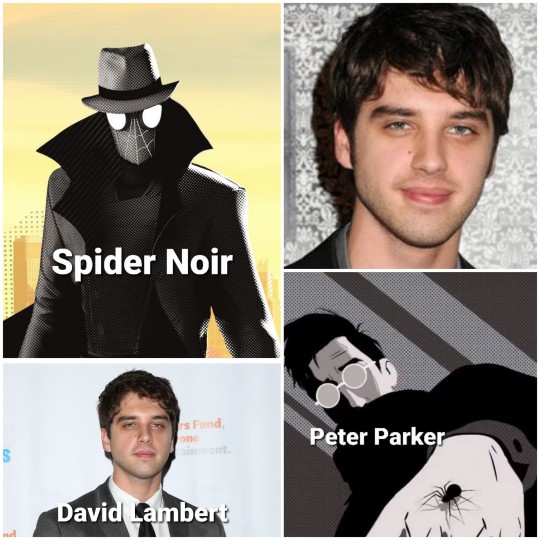
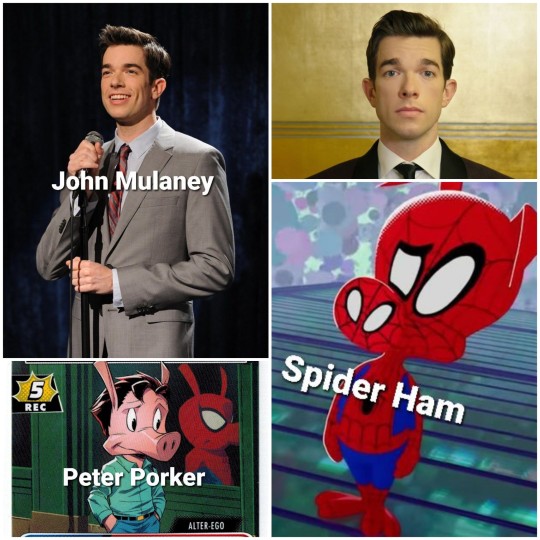





#miles molares#Spiderman#into the spiderverse#spider gwen#gwen stacy#peter parker#peter b parker#peni parker#spider noir#peter porker#spider ham#sp//dr#rio morales#Officer Jefferson “Jeff” Davis#jeff davis#rhenzy feliz#graham wardle#caylee cowan#david lambert#john Mulaney#sakai yuri#yuri sakai#rosario dawson#LaRoyce Hawkins#jack griffo
115 notes
·
View notes
Text
When u play for the characters and not the story

#Deus ex#Fallout 4#fallout 4 companions#Adam Jensen#Paladin danse#John Hancock#garrus vakarian#Thane#Farkas#skyrim#Miraak#vilkas#teldryn sero#mass effect#wayhaven chronicles#the soul stone war#The witcher#lambert the witcher#witcher eskel#emiel regis rohellec terzieff godefroy#emiel regis#dettlaff van der eretein#miguel o'hara#atsv miguel#Cyberpunk 2077#Johnny Silverhand#Goro Takemura#sandayu oda#Oda Sandayu#River Ward
552 notes
·
View notes
Text
The Battle of Worcester, 3rd September 1651: ‘say you have been at Worcester, where England’s sorrows began, and where happily they are ended.’
The “Crowning Mercy” and the end of the Civil Wars

Source: The Douglas Archives website
THE BATTLE of Dunbar shattered the fragile unity of the alliance gathered around Charles II to restore the Stuarts to the throne of England. The King was rapidly wearying of the dour Puritanism of the Covenanters and the constant lecturing he was receiving from Presbyterian ministers, suspicious of the sincerity of Charles’ conversion to the Calvinist cause. The “Kirk Party” (the old Covenanters who had reclaimed the government of Scotland after the failure of the Engager faction in the second civil war) began to lose ground. Charles was said to have been secretly delighted at the Kirk’s defeat at Dunbar, and looked to the rise of an authentic Scottish Royalism to propel him to his lost throne. His greatest hope was that the Catholic and pro-Suart Highlanders would come to his aid and he fled Edinburgh for Perth in October 1650, only to fall back into the hands of Covenanter forces as the promised Highland rebellion fizzled out.
At this point, the Presbyterian unity was also broken by the formation of a new military group known as the Western Association, based in the south-west of the country and under the command of a number of Covenanter officers. Their view was that the priority now was to defend the Solemn League and Covenant against the victorious Commonwealth forces, and that Charles Stuart should look to his own devices. On 2nd October the Western Association issued a ‘remonstrance’ to the Committee of Estates that blamed the defeat at Dunbar on the Kirk Party’s flawed strategy of supporting a King who continued to be surrounded by Anglican Royalists and whose personal conversion to Presbyterianism was skin-deep at best. A second remonstrance was released in which the Western Association effectively seceded from the Covenanter army, refusing to have any truck with the attempt to restore Charles to his throne. This resulted in a fundamental breach in the Scottish government in which the new faction, known as the “Remonstrants” was ranged against the Kirk Party.
With an English army dominant in Scotland and now the Covenanter government itself riven, Charles unexpectedly found himself in the welcome position of becoming the focal point of Scottish resistance against the invaders. Although most Scottish people entertained suspicion of Charles’ motivations and sincerity, they nonetheless recognised him as their sovereign, around whom they could rally to eject the hated English schematics of the New Model Army. Charles became head of an organic national Royalism that could yet transform his fortunes. The Kirk Party therefore determined to work with the Royalists to bring the Remonstrants to heel, but before they could, Cromwell and Major-General John Lambert did their work for them. The Western Association army was commanded by Colonel Gilbert Ker, who becoming aware of the Kirk’s intent to force the Remonstrants into compliance, thought his best option was to gain credibility and renown for his faction by defeating the English. Cromwell meanwhile had already decided to destroy Ker’s small army before moving on to contend with the Committee of Estates’ remaining forces under David Leslie. Initially Ker met with success, stymying Cromwell at the Clyde in late November and then moving to meet Lambert’s troops, whom he believed he outnumbered, outside Hamilton. On 1st December Ker entered the town believing Lambert’s troops had withdrawn, only to be ambushed by the Commonwealth forces as he did so. In the following short sharp battle, the Western Association army was destroyed.
The decisive defeat of the Remonstrants, although welcomed by the Committee, also deprived it of an army it had hoped to bring back into the fold. The government therefore quickly renounced previous strictures that had prevented Royalists, Anglicans, former Engagers and other “schematics” from forming armed forces. With the reluctant acquiescence of the Presbyterian ministers, the Kirk Party was able to increase its military strength to twenty five regiments by creating what was a genuinely Scottish national army, named the Army of the Kingdom. This paved the way for the formal coronation of Charles as King of Scotland at Scone, near Perth on New Year’s Day 1651. Charles was crowned by Archibald Campbell, Earl of Argyll, head of the Scottish government and now, at the apex of his power, kingmaker too.
However, despite the new optimism brought about by this display of national unity, what should happen next was not at all clear. Cromwell controlled the capital and all routes into England; Charles’ natural heartland of the Highlands was cut off from him and although Leslie had adopted a strong defensive line across the Firth of Forth, there was no immediately obvious military strategy that could feasibly deliver victory. Winter became spring which became summer with no movement by either side until Cromwell at last resolved to force the issue. In mid-July he ordered an amphibious crossing over the Forth, using flat-bottomed boats, and Commonwealth troops were soon landed on the Fife shore under the command of Lambert. The Scots moved to repulse the English force but Leslie’s soldiers were raw recruits who, in open battle, were no match for Lambert’s ironsides. The two armies met on the hills outside the town of Inverkeithing and it took just fifteen minutes for the experienced New Model troops to scatter their opponents. Over 2,000 Scots were killed in the ensuing rout, 1500 men were taken prisoner and the defensive front around Fife collapsed. There was now only one option left open to Charles and Leslie: to launch an invasion of England.
The evidence is that this is precisely what Cromwell wanted Charles and the Scots to do, because he removed his own forces from the roads into England and proceeded to attack and capture Perth. It is likely that the King and Leslie knew that they were heading into a trap, but Charles continued to entertain the hope that once the Royal standards were sighted in England, Royalists would rally to his cause and the relatively small army of 12,000 that commenced the march south on 31st July, would soon grow to become a force equal to those that could be fielded by the Commonwealth south of the border.
The Scots army crossed into England on 6th August. Charles’ high spirits did not last long. Not only did Argyll refuse to join the expedition on the grounds he thought it was folly, but the hoped-for rally of English Royalists did not happen. There was an abortive attempt to join Charles by Lord Stanley from the Isle of Man but, apart from this, just 200 reluctant recruits from Manchester joined the Royalist army. In truth, the English population were tired of war. They had no real love for the Puritan Commonwealth, but at least the New Model Army could enforce peace and slowly, over the last two years, life had begun to return to some sort of normality. Furthermore, there was no affection for the Scots who made up most of Charles’ army, either. This was the fourth Scottish invasion of England in twelve years and the destruction and plunder that had accompanied previous incursions had not been forgotten. Meanwhile, leaving George Monck to continue to hold Commonwealth positions in Scotland, Cromwell led an infantry-based force in pursuit, while Lambert and Colonel Thomas Harrison followed Charles at the head of two small cavalry forces, harrying his troops all the way. Finally, on 31st August, the Royalists arrived at Worcester, where Leslie determined the decisive battle needed to be fought.
Worcester did make sense as a base of operations from a Royalist perspective: the city had historically supported the King; it was bounded by the River Severn and was close enough to the Royalist heartlands of Cornwall and Wales. It was also defensible with a number of bridges into the city which could be destroyed or be blocked and it was partially walled. However, as the Royalists settled into their new stronghold, they were effectively surrounded. Cromwell, Harrison and Lambert had combined their forces and, supplemented by local Parliamentary levies, the Commonwealth army now numbered 31,000 men, significantly outnumbering Charles’ force. On 3rd September, Cromwell ordered an assault from the south, under Lambert, who built pontoon bridges to cross the Severn with 11,000 troops, while Cromwell himself positioned artillery to the east of the city and commenced a bombardment. Lambert’s troops encountered stiff resistance as they tried to cross the River Teme at Powick Bridge (ironically the site of the first skirmish of the first civil war) necessitating Cromwell to lead reinforcements to force the crossing. This in itself left the Commonwealth eastern flank exposed enabling Charles himself to lead a mounted charge out of the city that nearly broke the extended Parliamentary line. Fighting uphill, the Royalists were unable to pursue their advantage and when Cromwell’s troops returned, Charles was forced to retreat back into the town. Meanwhile Lambert had defeated the Scots facing him and the battle degenerated into a vicious street by street struggle. This ended when Cromwell captured Fort Royal and turned the city’s guns onto the Scots. The stubborn Royalist retreat became a rout with soldiers fleeing the city best they could.
The Royalist army was almost completely destroyed. 3,000 men were killed and 10,000 were captured, including Leslie and all his senior officers. Charles himself miraculously managed to escape and spent six weeks on the run, hunted by Roundhead troops and helped by a network of mainly Roman Catholic aristocratic safe houses. He almost certainly did seek refuge for at least one night in the oak tree at Boscobel while Parliamentary soldiers searched for him underneath its branches. Charles eventually managed to escape to France on 16th October. While he remained alive, the dream of the restoration of the monarchy remained intact, but in all practical terms, the Royalist cause was dead.
Cromwell himself knew that the nine year English civil war was indeed over. In his despatch to the Council of State, describing his final military victory in the Parliamentary cause, he summed up the country’s prevalent feelings of relief as much as triumph at the outcome of the battle, when he described Worcester thus: ‘It is, for aught I know, a crowning mercy.’
#english civil war#oliver cromwell#charles ii of england#David Leslie#battle of Worcester#John lambert#Thomas Harrison
0 notes
Text
Time for the April tdpa character birthday heads up
James Clarke/John/Joseph Lambert, 8th
Erin Keenan, 28th
Dennis Clarke/Daniel/David Milton, 29th
#the dark pictures anthology#the devil in me#little hope#the dark pictures little hope#the dark pictures the devil in me#supermassive games#James Clarke#john little hope#Joseph Lambert#Erin Keenan#Dennis Clarke#daniel little hope#david milton#character birthdays
18 notes
·
View notes
Text

I'll be redundant in reiterating that this man means the entire galaxy to me but I cannot help it: he is so special that I want to cry!
I love you to the moon and back, Bri 🤍
#music#queen#queen band#brian may#freddie mercury#john deacon#roger taylor#rock and roll#queen and adam lambert#queen + adam lambert
107 notes
·
View notes
Text
guess who got bored and decided to color-swatch most of the lh characters
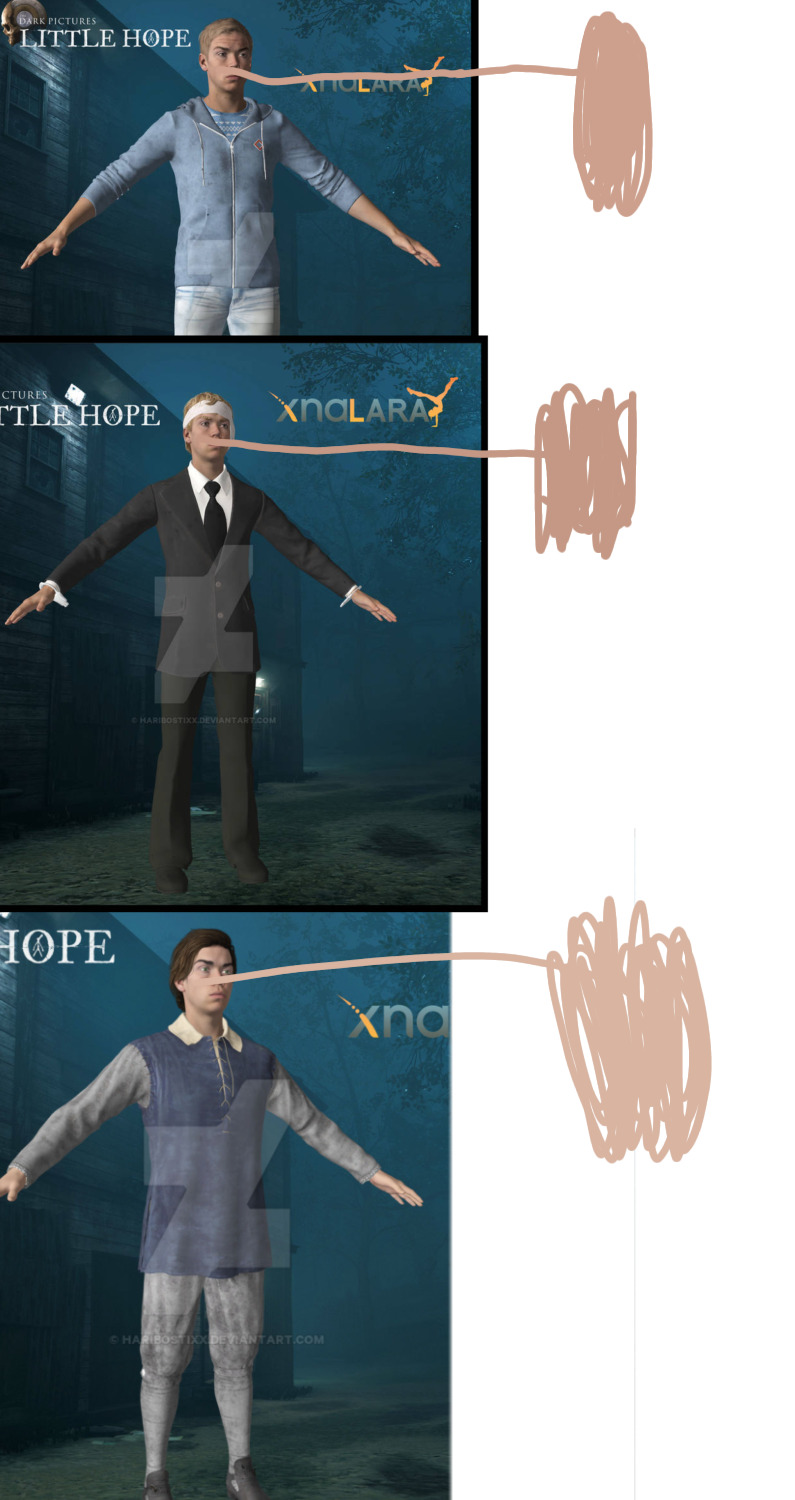
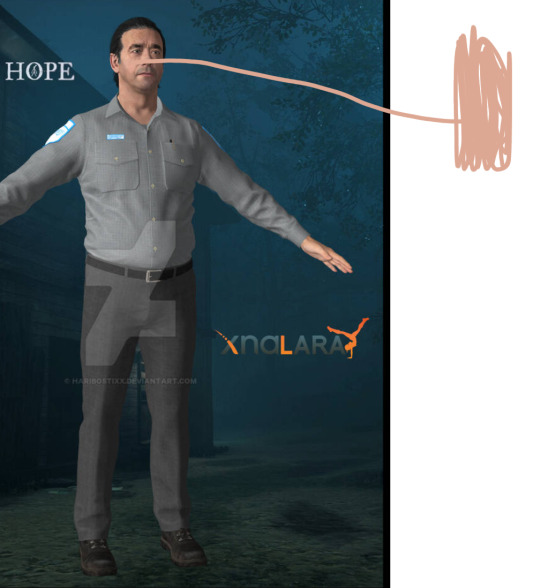
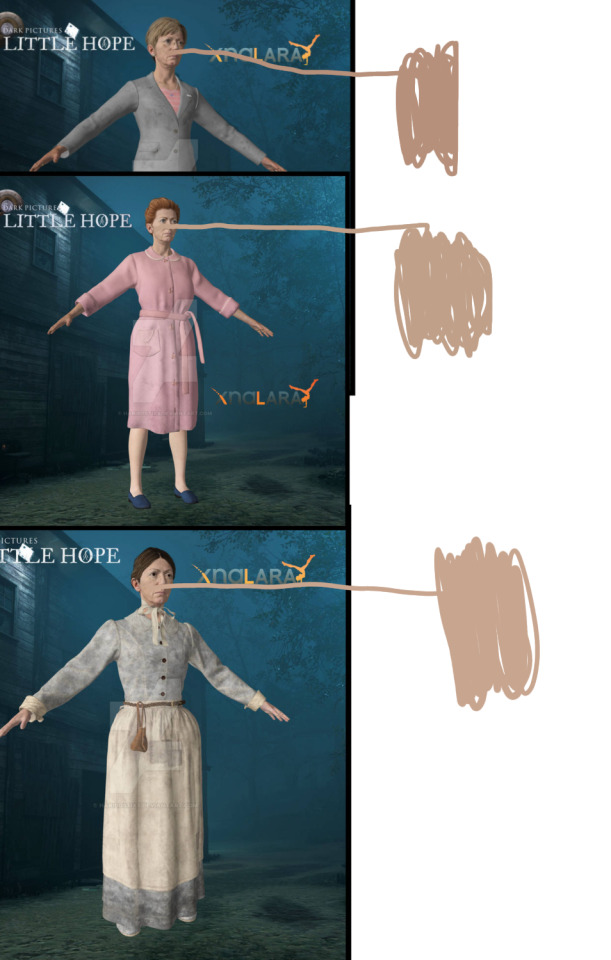
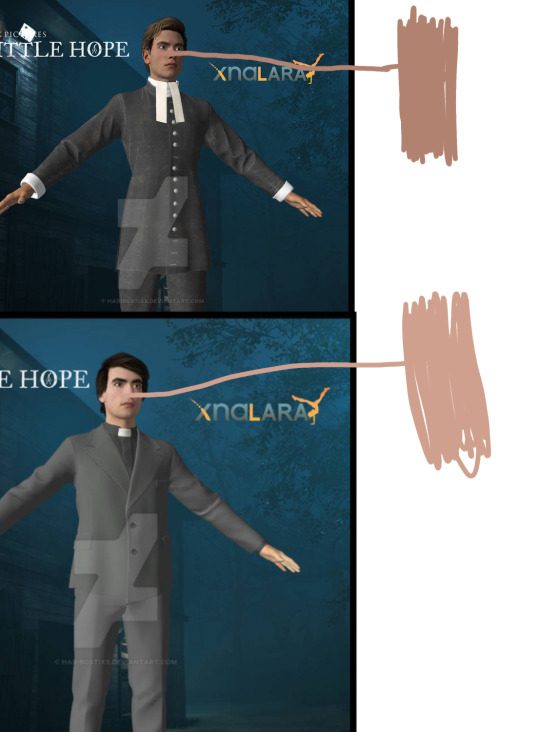





now obviously take all of this with a grain of salt since we all know color-picking from screenshots and models isn't the best way to get their skin tone due to color theory and color-picking being pixel but pixel but its the general kind of skin tone they have so <3
all images sourced from HariboStixx on DeviantArt.
#Little Hope#Andrew Little Hope#Anthony Clarke#Abraham Alastor#Angela Little Hope#Anne Clarke#Amy Lambert#Leonard Carson#Simon Carver#Daniel Little Hope#Dennis Clarke#David Milton#Isaac Worel#John Little Hope#James Clarke#Joseph Lambert#Taylor Little Hope#Tanya Clarke#Tabitha Milton#Thomas Wyman#holy wow thats alot of characters#Some of them aren't here like Vince and the M's cuz there was no T models of all of them :')#JESUS ABRAHAM TABITHA AND CARSON ARE SO WHITE COMPARED TO THE OTHERS😭😭😭😭#LIKE YALL P L EA S E IM BEGGING YALL TO GO OUTSIDE FOR ONCE AND YOUR LIVES😭😭😭😭#could i have done this better? 100% but this was just a fun lil pass time for me so#Yall can use it if you want or not like i said take all of it with a grain of salt#the most consistent tones seems to be the A girls the D's Isaac and Wyman#but that could of just been the pixel i picked from them💀🙏#im at Walmart rn so sure might as well post it
11 notes
·
View notes
Text
POTO KRISTIANSTAD
PHANTOM OF THE OPERA
Kristianstad (Kricccchhhensta’) Teater, April 15, 2023
PHANTOM: John Martin Bengtsson
CHRISTINE: Hanna Ulvan
RAOUL: Jonathan Böiers
CARLOTTA: Anna Hammarqvist
FIRMIN: Sebastian Lamberth
ANDRÈ: Anton Salvin
MADAME GIRY: Hanna La Fleur
MEG GIRY: Johanna Westholm
PIANGI: Filip Barna
And now for something completely different… The speaker announced «Not Broadway’s… Not West End’s… but OUR version of The Phantom of the Opera». And it sure is. This was a production that played with much of the well-known iconography: blonde Christine in white robes, lots of candles, the iconic chandelier, a Phantom in the shadows, and scenes you might feel resemble something you’d seen before. Yet the total felt independent, fresh and creative.
Take the AUCTION SCENE. You’d think featuring a woman as the auctioneer was a gimmick, in the vein of «it’s always a man, therefore we feature a woman». But it worked very, very well. A business woman with authority, and no time for nonsense. The set had a bold original Phantom feel with the drapes and the veiled chandelier in front. The cast was standing around it. But once the Overture hit we got the first glimpse of creative thinking. Raoul stumbled around in the auction set, like a hellish nightmare scene, before it slowly transformed into his youth and Hannibal. I loved this so much. The chandelier rose with flickering light and an added sound effect of crystals shaking. Effective.
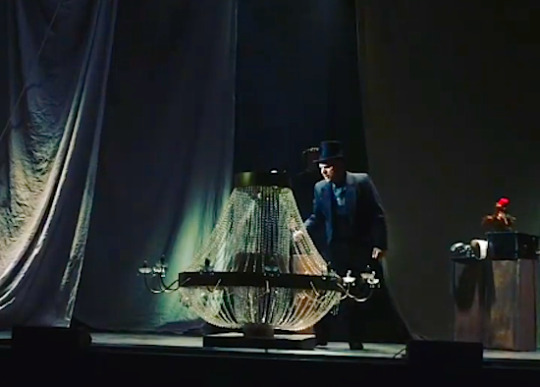
HANNIBAL gave the first glimpse of a quite versatile set. In some productions you may tire quickly of seeing the same modules or sets being used for all scenes. I never really got the feeling in this production; only towards the end did I realize they used the same set pieces twisted and turned. But in a clever and effective way. So also in Hannibal, where the main set was a staircase, columns and drapes. I neither loved nor hated the costumes, they went for a minimalistic antiquity look and it served the purpose. Bonus for printed elephants on the ballerina costumes, I guess. Both Filip Barna (Piangi) and Anna Hammarqvist (Carlotta) had impressive vocals. Carlotta’s rant after a sandbag nearly hit her was also A+. And this Lèfevre... He was heading for AUSTRALIA.
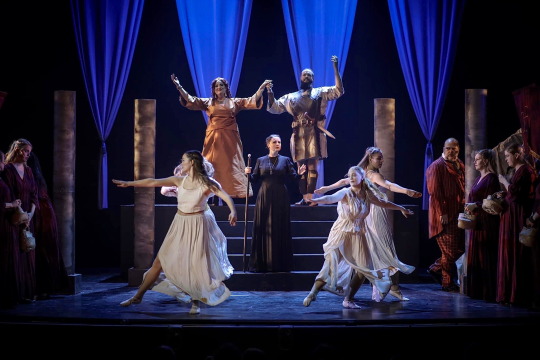
THINK OF ME was the first real glimpse of Hanna Ulvan as Christine. The first think that struck me is how very enthusiastic, bubbly and outwards her Christine appeared. As I never saw her in the replica production in Stockholm, I don’t know if it’s the specific directing in this non-replica version, or her take on the role. But I rather liked it, as it made Christine a slightly different figure and in some ways I got Leroux vibes to the kind and giggly Christine described when she’s at the opera (but without the edge seen in the lair scenes).
Voice wise Think of Me didn’t quite do it for me. Ulvan has some glorious upper notes, a a good coloratura ring to it, and she appears to have a nice depth as well. But the mixed middle register, which this first aria has a sneaky amount of, appeared a bit muffled, and her voice sometimes has dominant overtones. At the other hand I know some Christines holds back a bit in the first act to also vocally show Christine progressing in the second act. It made me curious of what to come. Costume wise Christine herself ripped off the Hannibal costume, partly covered by other cast members, and they put on her a bronze robe more or less identical to Carlotta’s. Also got the first glimpse of Jonathan Böiers as a very sympathetic young Raoul.
ANGEL OF MUSIC gave RAH vibes. A set piece with a wall and mirror in the middle, a dressing table with the back turned to the audience to the right, imaginary door to the left. But with a nice twist: during Little Lotte it was Christine who was spinning around on the floor while Raoul sat down at the boudoir. Which very much underlined Ulvan’s bubbly Christine. She had nice chemistry with both Meg (Johanna Westholm) and Raoul (Jonathan Böiers).
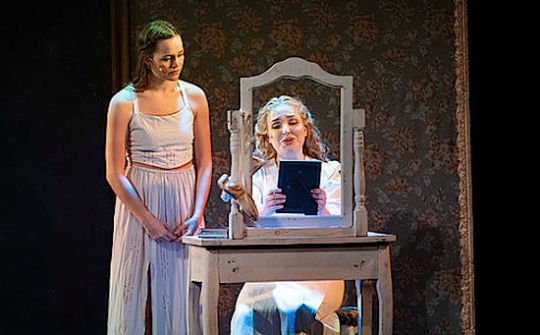
Ya know how I rave about John Martin Bengtsson as the Phantom? Well. I had forgotten about just how amazing his vocals is. The second his voice boomed from behind the mirror I knew the next minutes of the show would be glorious. Such depth, such volume. As the mirror was down on the floor and not tilted, they had Christine sitting down on the floor for max effect. And that was beautiful - her reflection overlapped perfectly with the Phantom’s.
Now, for the TITLE SONG they used all the innovative tricks in the book and I loved it. For the first part a big gate went down in the middle of the scene. It gave an impression of a huge mirror - but this was in fact just doubles perfectly mimicking the leads; one pair crossing from right to left, and the other pair from left to right. This was one of my favourite set solutions in the whole show.

Then on to the boat, which basically was a mesh/cage structure rising from the floor. As the Phantom gondoled and Christine held the lantern, smoke and cliffs surfed past them, giving a sense of movement. The cage structure was then lowered into the floor, with a brief curtain down and the cadenza, and what had been the staircase structure for Hannibal was massively transformed into a labyrinth of stairs covered with masks, the monkey musical box, a creepy ballerina doll, a «cracked» backdrop, and a large organ to the right. During the song the ceiling was also covered with burning candles, Harry Potter/Restaged Tour style. Absolutely gorgeous.
Cue: MUSIC OF THE NIGHT. Which again was utterly vocal perfection. John Martin Bengtsson is tall, and this time in floor-length leather coat and half-mask covering the upper half of the face which created an iimposing figure opposite tiny Hanna Ulvan. The overall blocking felt like familiar terrain, with some poses resembling original Phantom. In this version I would have liked for the blocking to include more direct physical contact - or almost so - between the Phantom and Christine. Instead Christine got a bizarre dance with the creepy ballerina doll, which obviously made her faint… Gotta give props for a take on it I had never seen before, and also a foreshadowing to the Managers scenes where the Phantom is shows as the perfect puppet master. Yet… I’m not sure i loved it, I just enjoyed it on an intellectual level. If that makes sense.
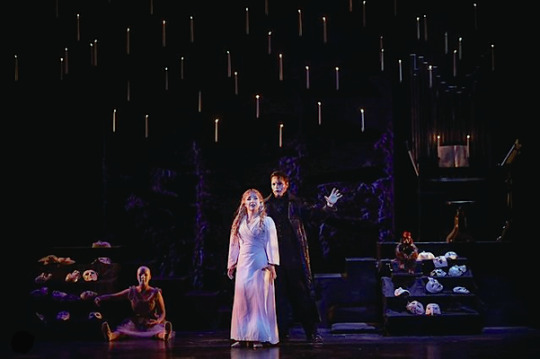
STYDI… A more literal take on «music that burns», as Christine wakes up from the thunderous composing and is franatically covering her ears to make it stop. The Phantom, in the mean time, ha brought over some composing quirks from the Danish production. YES to that. You’d think this would not encourage her to approach the Phantom, but she does. The unmasking was a perfect balance between utter rage and a «pitiful creature», and beautiful acted by both of them. Yet I could not stop wondering why the Phantom didn’t snatch one of the 15 other masks he had laying around in the lair to cover his face… I get the symbolism, that it’s not really about the mask itself, rather that Christine revealed him and saw his face. But still. Dude, you have a lot of masks!
It appears non-replica versions really love to have Buquet sing MAGICAL LASSO from box five, or at least one of the boxes. They did the same in Hungary, in Romania/Norway/Greece, and also here. It works well as a foreshadowing, you know Buquet is messing hard with the Phantom when doing that. Using the theatre’s actual boxes was a nice detail as well. In this scene I noticed what a splendid voice Madame Giry (Hanna La Fleur) has. Beautiful upper register.

1ST MANAGERS… This set resembled the dressing room set, but this time with a «window» in the upper left side, a staircase next to it, and in front right a writing desk and chairs. The managers was very good; André (Anton Salvin) was less flamboyant than in the replica versions. Firmin (Sebastian Lamberth) had more comical relief moments. Interesting change. The «window» and the staircase introduced an ever-flowing new range of people until the scene was set for the Phantom.
The moment they started reading his letter he appeared in the «window», and I was like «Aha! Just like Hungary and RAH and stuff». But then they took it up a notch. The people in the office froze, the Phantom physically entered the room, and at one point he even started waltzing with Carlotta when casting her as the silent pageboy, much like Christine had been waltzing with the creepy ballerina doll in his lair. This was eerie, as all of them were frozen except the Phantom. A true puppet master. With him leaving they returned to normal. The rest of the scene felt very ordinary after this! Carlotta changed into the Il Muto costume on stage, as favoured by RAH and a long line of non-replica productions.
The IL MUTO costumes had a LOT more going on than what photos ever showed. They were all glittering in silvery gold and pink. Pretty. I didn’t quite understand the Il Muto set, it looked like a tiny box on a big stage. Why so cramped? The scene itself was fairly close to the replica version, or maybe more RAH as they sat on a chaiselongue. But the acting was much the same, as was the costume routine. Here (as well as in Hannibal) they made a big deal out of Carlotta using a mouth spray. I never liked that, as it covers up the Phantom’s ventricolist abilities. You’d think they rather underline that here, with their Phantom being such a puppet master after all. But ah well.
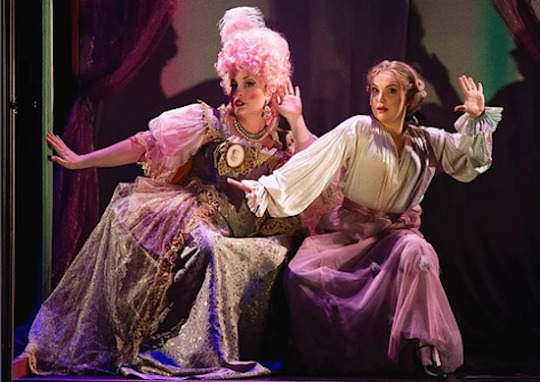
I gotta admit I did not like the choreography in this version at all, and especially so the Il Muto ballet. The choreography made them look like a beginners class in jazz ballet. The Il Muto ballet was possibly my least favourite scene in this production. By no fault of the dancers, mind you. But it didn’t help that there were only three dancers in the scene. Would probably have been cooler with just one primadonna and the others standing in the back. But… dead Buquet was a great effect. He (I.E. his dummy) had a bag over his head and was flung in from the left. Looked scary and realistic, it did.
In the ROOFTOP scene Christine kept her Serafimo costume, but with an added cloak. If I had been a bit hesitant to Hanna Ulvan’s vocals in TOM she sung the h*ll out of this scene. Her «sooooaaar» absolutely soared, with a phenomenal upper register. She and Böiers sounded so lovely together. The set itself had a staircase solution and with two angel sculptures in the back. As is proper the Phantom was later on introduced by a bit of thunder and lightning, looking like a dark shadow like the sculptures. Very cool. Another stellar vocal moment for JMB, especially him holding the «…yoooouuuuu» for eternity, until the curtain call and the chandelier started crashing. DAYM.
(INTERMISSION: Oh so you only accept cash for the brochure? Great… *runs across town for an ATM*)
MASQUERADE. It was a bit meeeh. Again because I absolutely did not like the choreography. Lots of robotic arm movements. Also few costumes that identified the leads well; only when Christine and Raoul sung to eachother did I realize who they were. I would have liked more defined figures, or a choreograpy singling them out more. But nice formations throughout. The backdrop looked like a giant cracked mirror and of course the Phantom came crashing through here as Red Death. Only proper.
Now, for those who saw BBC’s «Behind the Mask» documentary back in the days, original magic consultant Paul Daniels told about his original idea for Red Death. He never liked the very obvious trapdoor which Hal Prince favoured. He wanted Red Death to just dissolve into thin air, his costume falling to the floor. And guess what: that is exactly what they did in Kristianstad. And WHAT AN EFFECT. Amazing.

The BACKSTAGE encounter with Raoul and Madame Giry was fairly standard: them in front of the curtain, with a lantern, still in costume. Again I noticed just how lovely a voice this Giry sported.
2ND MANAGERS: same set as the first, obviously, and the Phantom back as even more of a puppet master. Each time he mentioned a person, they moved like a puppet on a string, to his commandments. Here Christine wore her blonde hair up, and a purplish green taffeta day dress. Cool combo. In this scene i also realized that a redhead Christine with her hair up (like previous Christine Sara Ollinen had) and a redhead Carlotta with her hair up would have looked maybe too similar. Again good chemistry between Raoul and Christine, I can’t pinpoint what I liked so much except everything made sense and they worked so well together.

SITZPROBE: When you take a fairly ornamental piano and paint it white AND turn its back towards the audience… it will look like something from the 1980s. But anyway… fairly standard scene, with the piano to the left and the cast to the right. Biggest «problem» was that Piangi sung too well all through the show, and didn’t sound particularly out of pitch in the sitzprobe. Could probably have exaggerated his dislike of the twelve-tone scale more. But that’s an absolutely minor detail. Oh, and «music that burns»? It did of course make the piano burn, again a feature seen in a handful of non-replica productions (at the top of my head the Restaged Tour and Romania/Norway/Greece).
MAUSOLEUM scene was another where I felt they had gone for originality, and in a good way. A cloaked Christine buying a red rose from a mysterious cloaked woman. A violin appearing in box five during the violin solo, a shadow of the past, Daddy Daaé. Then a low-key graveyard with small black crosses here and there; Daddy Daaé’ grave with a white cross however, where Christine put the role. In the middle a mausoleum. Hanna Ulvan absolutely nailed this scene. Amazing vocals, shifting effortlessly between belting /or mixed voice) and divine top notes. And intense acting. I loved it.
As Raoul appears to find his fiancé, so does the Phantom, emerging from the mausoleum. At the beginning Raoul can’t see him, as he is more in the back, but he can hear him. Christine walks as hypnotized towards the mausoleum, but it cut off by Raoul who now also spots the Phantom. Then… 2004 movie. Sword fight. WHY. Everything up until now had been so perfectly eerie, and then something as mundane as swords. Ugh. It’s not that it was not executed well, and both JMB and Böiers did some amazing swordmanship. But it’s the fact that the Phantom needs to use a physical tool, much like Carlotta’s mouth spray or the infamous gun in the Romanian/Norwegian/Greek production. He looses his magic. Anyhow… no-one really wins, and Raoul and Christine eventually runs off.
DON JUAN. What. Even. Is. This. Scene. ??? Stage with a staircase on each side. Two dancers laying lifeless in the middle of the stage. Dead? Poisoned? Drunk? Then a black-clad and masked cast enters, with spitroasts and fruit and holds this over the dancers. Ah. They… are… the… fire? The grill? Uhm, WHAT? My brain is trying so hard to get on board. Passarino is a woman. Or a woman in a pants role. OK. Christine appears, clad in a white lace robe. The cast greets her by… holding the spits with meat towards her…? Are they threatening her? Welcoming her to the feast? I am so lost. Then they disappear. Christine is back to her very bubbly, grand self. Acts the HELL out of Aminta, standing at the top of the left staircase. The until-now lifeless dancers starts to move. The Phantom sings from the top right staircase. Christine and the Phantom sings to eachother, at a great distance. The dancers get more and more erotic, at one point I could have sworn they simulated intercourse (separately, but still). Yet SUCH A DISTANCE BETWEEN THE PHANTOM AND CHRISTINE.
This is the weirdest Don Juan I have seen in my life. And frankly the least sensual one, despite the effort of the dancers. There seemed to be no connection between the two leads, mostly due to the blocking. When they are finally descending the stairs and moving towards eachother the scene is over anyway and it feels too late. Original, yes. But too conceptual for me. Way, way, WAY too conceptual for me.
Back in the lair, for the Final Lair. What a relief after Don Juan. I never wanna go back there. Same set as first lair, but the Phantom has some tricks up his sleeve. When Raoul enters, he carries a gun. You should have learned by now you don’t bring down the Phantom with a weapon. The Phantom heads up to his organ and locks the gate with a lever (understood by a rumling sound effect). But then… The Phantom use Christine as a human shield to avoid Raoul’s gun. YOU DID NOT. Absolutely not. Just no. Then he simply snatches Raoul’s gun and use it against him. Buys with toys, enough with the silly weapons. They are a mere distraction. Don’t. Also: you still refer to hanging Raoul. It makes no sense.
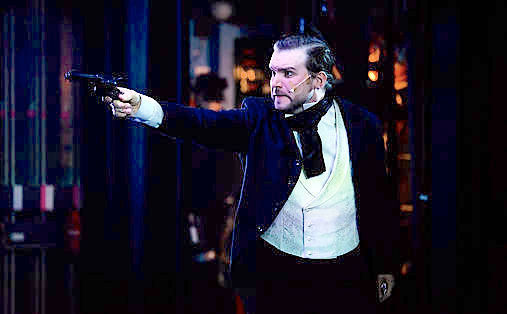
Back and forth with the threatening Christine has luckilly had enough (and the Swedish translation of «…turns to tears of hate» is maybe even more powerful, as it means something like «NOW I WISH YOU DEAD», perfectly belted by Hanna Ulvan). As the chaos breaks down she eventually kisses the Phantom, once, twice, absolutely disarming him, if not physically then mentally. He opens the lever and orders them to leave. And it’s a broken Phantom we face at the end. Throughout the scene I almost got Frankenstein vibes, a tall and menancing figure with restrained bodice language. Like a wounded beast. Add booming voice - and it’s such an exclamation point of a character, demanding all attention. This is also why I think swords and guns are unnecessary. He already owns the room and commands all the other characters. But ah well. I halfway suspected the Phantom would just disappear into one of the staircase structure, as he was at one point curled up in one of the corners of it. But then he stood up and walked right through the backdrop, boldly lit up through the many cracks. Walking into the light and to redemption? Walking into the flames of hell? I’m not sure, but visually it looked very good.
In this production the whole goddamn mob enters the lair. But as per usual it is Meg who picks up the mask and holds it up as the light dims. Which objectively is beautiful. In the back of my head I was pondering on how Meg knew which mask was the right one, however. As this lair is decked with white masks. But that’s probably a nerdy or too literal point to make.Cue: thunderous applause.

OVERALL: a very interesting, clever and creative production, playing on familiar Phantom visuals as well as adding many of their own. Raoul stumbling around in the nightmare-ish Auction/Overture set, dreamlike title song and MOTN, a magical Red Death disappearance and a super strong WYWSHA stands out as favourites. Some outstanding leads throughout, with a extra shout-out to John Martin Bengtsson’s Phantom. He is world class. Period. I also really enjoyed Hanna Ulvan’s somewhat different take on Christine, Jonathan Böier’s abolutely solid Raoul and Madame Giry’ beautiful vocals. But frankly, all leads did very well. Energetic orchestra, falling chandelier, old and gorgeous theatre. This was Phantom allright.
So I traveled through three countries (and two train break-downs) to see this. It was the first live production I saw of POTO after the pandemic. It’s the second non-replica production I have seen live, and my second production where John Martin Bengtsson played the Phantom. I only had a vague idea of what to expect, but I very soon found out that photos doesn’t do this production justice at all. Scenes really needed to be watched in full to make sense. Many details were also much revamped for the 2023 run compared to the 2020 premiere. So I had to experience it live, and I am so grateful I was able to.
#phantom of the opera#poto kristianstad#poto sweden#john martin bengtsson#hanna ulvan#jonathan böiers#anna hammarqvist#sebastian lambert#anton salvin#hanna la fleur#johanna westholm#filip barna#non replica#operafantomen#kristianstad teater
105 notes
·
View notes